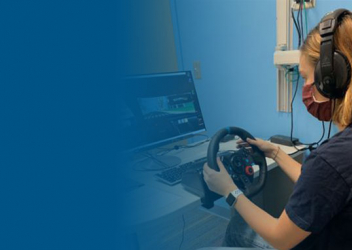Research In Action
Research In Action
Breadcrumb

Access to driver education and licensing is both a road safety and transportation equity issue. According to recent research conducted in Ohio by researchers at Children’s Hospital of Philadelphia (CHOP), mandated driver education and behind-the-wheel professional training appears to reduce crash risk for young new drivers.
In Ohio, drivers seeking a license before age 18 are subject to a comprehensive driver licensing policy that includes behind-the-wheel training and typical Graduated Driver Licensing (GDL) restrictions. Our study found that teens licensed at age 16 had the lowest exam failure and crash rates in the first year of licensure of all drivers under age 25. License applicants age 18 and over, who are exempt from these young driver policies, had the highest crash rates early in licensure. Less than 1% of this age group had completed driver training at the time of applying for licensure, suggesting that this policy has notable effects on outcomes for young drivers.
We also found that, when controlling for other factors, regardless of age, those living in neighborhoods with the lowest 10th percentile socioeconomic status (SES) in terms of income and education had higher crash rates and were more likely to fail their first on-road driving exam. Although we can only speculate, this finding may be in part related to the cost of behind-the-wheel training, testing, and obtaining a license in Ohio. In other words, teens from lower SES neighborhoods may delay licensure until age 18 due to financial reasons, for example to avoid the expense of driver training, or when they can afford a car.
Another recent study conducted by researchers from the Stuart Weitzman School of Design at the University of Pennsylvania and CHOP highlights barriers to accessing behind-the-wheel professional driver training and licensure, particularly among low-income teens. The findings revealed that financial status and travel time significantly impacted the likelihood of teens completing driver training and obtaining a young driver's license. Young drivers in lower-income Census tracts had a lower probability of completing driver training and obtaining a license before the age of 18. Conversely, as travel time to driving schools increased, teens from wealthier Census tracts were more likely to forgo driver training and licensure than teens in lower-income areas.
Drive to Succeed Scholarships
That’s why we commend Ohio Governor Mike DeWine and his administration for awarding $575,000 in grants to help teens living in lower income neighborhoods afford driver training. Part of the Drive to Succeed Scholarship Program established in December 2022, 25 local government agencies will provide the training at no cost or little cost to eligible families.
With Ohio state’s mandatory driver education costing anywhere from $300 to $600 or more, Gov. DeWine understands that this can be a huge barrier for some families. Programs like his state’s Drive to Succeed could help ensure that all teens become safe drivers, not only those who can afford driver training.
In addition, Governor DeWine has awarded a total of $50,000 to five juvenile courts in Ohio to provide advanced behind-the-wheel BTW training to young drivers who receive citations for traffic violations. This training is made available at no cost to families as part of the Youthful Driver Safety Fund established in 2020. The Ohio Traffic Safety Office within the Ohio Department of Public Safety administers both grant programs.
We look forward to continuing our research in Ohio to examine the impact of these programs and policies over time to help improve access to licensure and safe driving for all. More states should consider providing financial assistance to improve access to driver training and education to make the roads safer for everyone.




